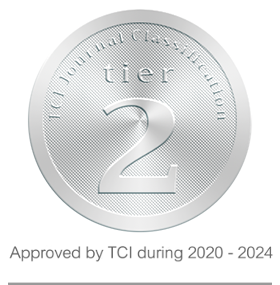Sustainable Rubber Plantation Development with Sufficiency Economy Philosophy
Keywords:
Sustainable agriculture, Integrated agriculture, Agroforestry, New agricultural theoryAbstract
Sustainable rubber plantation management, based on the Sufficiency Economy Philosophy, offers a promising solution for rubber farmers seeking long-term stability. This approach emphasizes encouraging self-reliance and diversification, reducing dependence on volatile rubber prices. It prioritizes resilience and sustainability within the rubber plantation, transitioning from a monoculture to a diversified agroforestry system. This will incorporate efficient water management practices according to new agricultural principles to ensure long-term economic viability, social well-being, and environmental harmony, all in line with the philosophy of the Sufficiency Economy. According to the nine steps of the sufficiency theory, planting three forests brings four benefits with five levels of tree planting to create a basic and advanced sufficiency economy for rubber farmers. Sustainable rubber plantation management involves creating mixed plantations, such as intercropping rubber trees with other plants and raising livestock or practicing aquaculture within the plantation. This includes incorporating three main types of vegetation: perennial trees for economic value, fruit trees, and vegetables and medicinal plants for consumption and household use, respectively. Seven different mixed-cropping systems generate household income through distinct compositions. The first system combines main crops with perennials, economically valuable trees, fruit trees, vegetables, and medicinal plants. The second and third systems focus on main crops alongside perennials, economically valuable trees, fruit trees, vegetables, and medicinal plants. System four implies the combination of main crops and perennials for economic value. Systems five and six prioritize fruit production by pairing main crops with fruit trees, vegetables, and medicinal plants, or with only fruit trees. The final system emphasizes vegetable and medicinal plant production by combining them with main crops. Two distinct planting configurations exist for intercropping medicinal plants within rubber plantations: single-row and double-row planting. In both cases, the distance between rubber rows is widened to accommodate associated crops, allowing for 50–60 rubber trees per rai (a traditional Thai unit of land area). Selecting the optimal crop combination system and planting composition depends on three key factors for each farmer: desired products, available time, and labor resources.
References
กรมป่าไม้. 2562. คู่มือสำหรับประชาชน การปลูกไม้มีค่าทางเศรษฐกิจ. กรุงเทพฯ: คณะวนศาสตร์ มหาวิทยาลัยเกษตรศาสตร์.
วิทยา พรหมมี. 2563. ระบบการสร้างสวนยางแบบผสมผสานโดยการปลูกยางร่วมกับพืชชนิดอื่น. บริษัทนิวธรรมดาการพิมพ์ (ประเทศไทย) จำกัด. 75 หน้า.
สถาบันวิจัยยาง. 2554. คำแนะนำการใช้ปุ๋ยยางพารา ปี 2554. บริษัทนิวธรรมดาการพิมพ์ (ประเทศไทย) จำกัด. 38 หน้า.
สำนักงานปลัดกระทรวงเกษตรและสหกรณ์.2565. เข้าถึงได้จาก: https://www.opsmoac.go.th/sustainable_agri--home. [เข้าถึงเมื่อ 15 กันยายน 2565]
สำนักงานสภาพัฒนาการเศรษฐกิจและสังคมแห่งชาติ. 2565. เข้าถึงได้จาก: https://www.chrome-extension://efaidnbmnnnibpcajpcglclefindmkaj/https://www.nesdc.go.th/ewt_w3c/ewt_dl_link.php?nid=2700. [เข้าถึงเมื่อ 15 กันยายน 2565]]
สมยศ ชูกำเนิด, สมพงศ์ คงสีพันธ์, ไววิทย์ บูรณธรรม, นิลรัตน์ โชติมณี และ สุขุม แก้วกลับ. 2541. ศึกษาการเจริญเติบโตและผลผลิตหวายบางพันธุ์ที่ปลูกเป็นพืชร่วมในสวนยาง. กลุ่มวิจัยและพัฒนาการผลิตยาง ศูนย์วิจัยยางสงขลาทสถาบันวิจัยยาง.
องค์การพิพิธภัณฑ์วิทยาศาสตร์แห่งชาติ. 2562. รู้ไหมว่าป่าก็มีระดับชั้น. กรมส่งเสริมคุณภาพสิ่งแวดล้อม กระทรวงทรัพยากรธรรมชาติและสิ่งแวดล้อม.
Langenberger, G., Cadisch, G., Martin, K., Min, S. and Waibel, H. 2016. Rubber intercropping: a viable concept for the 21st century? Agroforestry Systems 91: 577–596.
Downloads
Published
How to Cite
Issue
Section
License

This work is licensed under a Creative Commons Attribution-NonCommercial-NoDerivatives 4.0 International License.



